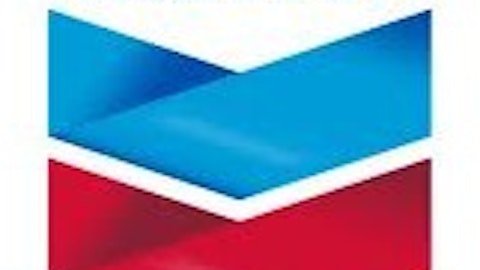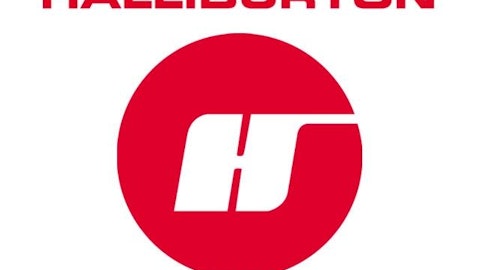Despite near-term economic uncertainties, I believe that in the long run growth in oil demand driven by emerging-market industrialization and rising wealth levels would provide for attractive returns in the well-positioned oil-services equities.
Rising wealth levels have a major bearing on per capita consumption of resources. Countries with 95% of the population earning more than $6,000 annually have per-capita oil consumption that is 12 times more compared to countries with less than 25% of the population earning that level of income. The number of people with annual income in excess of $6,000 (fixed) is expected to double over the next two decades.
Moreover, GDP growth in developing countries, as they industrialize, is more energy intensive relative to developed economies. IEA estimates global oil demand will grow by 1.2% annually over the next five years. However, increasing populations and rising average per-capita consumption in emerging economies coupled with increased economic stability globally could lead to actual oil demand exceeding IEA estimates – offsetting gains in energy efficiency in developed economies.
Growth in oil services
The oil-services industry has the following medium-term growth drivers:
Rising global oil demand (~1.2% per annum)
Incremental investments to augment supply capacity – Global E&P spending is expected to increase 7% y-o-y in 2013 (reaching a record $644 billion)
Increased technical complexity of new projects to augment capacity (traditional and easily monetized fields are being replaced by those with higher technological complexity; deep sea-water drilling; more geologically complex reservoirs; declining size of new discoveries)
Geo-political risks and uncertainties – support oil prices, need for higher buffer stocks, diversification of supply sources
Oil services are grabbing an incremental share of gross GCI in the growing global oil industry – against oil producers and refiners. From 2005 through 2010, the share of oil services in total industry GCI increased from 8.6% in 2005 to 12.7% in 2010. More technological complexity will lead to higher margins.
Furthermore, rig utilization levels continue to rise. Current offshore rig utilization levels are at 85.1% compared to 80% a year ago (utilization levels running close to 100% in Brazil). High utilization levels (and therefore, tight supply conditions) will lead to higher day rates and eventually expanding margins for oil-services companies.
Prefer companies with higher international exposure
Barclays’ reportst that E&P investments in North America will lag international investments in 2013. International E&P spending is expected to increase 9% y-o-y, reaching $460 billion, whereas spending in North America will rise nominally to $185 billion from $183 billion during 2012.
An oversupply of natural gas and subsequent lower gas prices have led to reduced E&P investment allocations for North America in the near term. As a result, I prefer companies having greater exposure to regions outside of North America.
The following chart expresses the percentage contribution by operations outside of North America to gross revenue for major oil services companies:
| Company | % contribution by operations OUTSIDE of North America to total revenue |
|---|---|
| Schlumberger Limited. (NYSE:SLB) | 68% |
| Halliburton Company (NYSE:HAL) | 44% |
| Baker Hughes Incorporated (NYSE:BHI) | 49% |
| Weatherford International Ltd (NYSE:WFT) | 54% |
International diversification

Additionally, higher operating margins from international operations would lead to overall margin expansion. Revenue per rig are the lowest in North America. Schlumberger Limited. (NYSE:SLB)’s EBITDA margins have been highest in the Middle East & Asia Pacific regions.
As international operations continue to grow in importance, Schlumberger is better positioned relative to its peers to benefit both from revenue growth and overall margin expansion.
Strong fundamentals and attractive valuation
Schlumberger Limited. (NYSE:SLB) is a leading provider of technology, integrated project management, and information solutions to the international oil-and-gas exploration & production industry. It employs more than 118,000 personnel at operations in more than 85 countries. The company reported 2012 revenue of $42.9 billion (14% y-o-y growth) and income before tax of $8.4 billion (15.2% y-o-y growth).
Schlumberger Limited. (NYSE:SLB) is the largest oil-services company globally; in addition, it has a more attractive growth profile compared to its peer set. It possesses the highest operating margin in the industry, as the company stands far ahead of its competition in terms of innovation and cost control.
Schlumberger’s solid fundamentals are reflected in key operating & growth metrics. Key metrics comparison:
| Schlumberger | Halliburton | Baker Hughes | Weatherford | |
|---|---|---|---|---|
| Revenue (USD) | 42.88B | 37.80B | 19.55B | 9.59B |
| Operating Margin | 0.18 | 0.16 | 0.10 | 0.08 |
| Net Income (USD) | 5.42B | 2.58B | 1.20B | -778.00M |
| Forecast Earnings Growth (2013) | 12.67% | 6.18% | -2.25% | 54.68%
(of low base) |
The company is well diversified and a large proportion of its revenue is non-rig related. Furthermore, Schlumberger Limited. (NYSE:SLB) is best-positioned amongst its peers in international diversification, with 68% of revenue contribution stemming from operations outside North America. This leads to a reduced risk profile and an ability to yield stable returns.
However, if we consider the leverage for Schlumberger Limited. (NYSE:SLB), Halliburton Company (NYSE:HAL) and Baker Hughes Incorporated (NYSE:BHI), all three operate on a similar debt/equity ratio.



